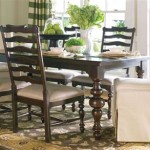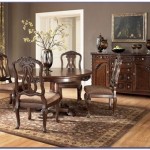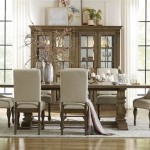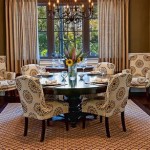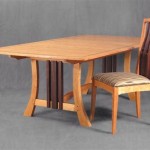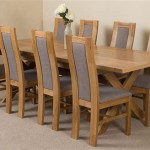Harmonizing Living and Dining Spaces: Principles of Interior Design
The living room and dining room often serve as the central hubs of a home, spaces where daily life unfolds and where gatherings with family and friends take place. Designing these areas to be both aesthetically pleasing and functionally efficient requires careful consideration of various factors, including spatial arrangement, color palettes, furniture selection, and lighting design. A well-executed design can create a cohesive and inviting atmosphere that enhances the overall living experience.
The strategic integration of the living room and dining room is crucial, especially in open-concept designs. This integration necessitates a unified design approach that considers the flow of movement between the two spaces, ensuring a seamless transition. The selection of complementary colors, materials, and furniture styles can effectively tie the two areas together, creating a sense of harmony and visual continuity.
Spatial Planning and Functionality
Effective spatial planning is the cornerstone of successful living and dining room interior design. This involves a thorough understanding of the available space, its architectural limitations, and the intended uses of each area. The placement of furniture should facilitate comfortable movement and interaction while maximizing the functionality of the rooms. Consideration should be given to traffic flow, sightlines, and the creation of distinct zones within the shared space.
In smaller homes or apartments, maximizing space is paramount. Multifunctional furniture, such as sofa beds or dining tables with leaves, can provide flexible solutions for accommodating different needs. Vertical storage solutions, like shelving units or wall-mounted cabinets, can also help to optimize space utilization without compromising aesthetics. Thoughtful consideration of scale is crucial; oversized furniture can overwhelm a small space, while undersized pieces may appear insignificant in a larger room.
Conversely, larger spaces present a different set of challenges. Creating a sense of intimacy and warmth in a large living or dining room requires careful zoning and the use of visual anchors. Area rugs can define seating areas, while strategically placed lighting fixtures can create focal points and delineate different activities. Furniture arrangement can also play a key role in defining space, with strategically placed sofas or consoles acting as visual dividers.
The arrangement of furniture should also consider the natural light sources within the rooms. Positioning seating areas near windows can maximize natural light, while darker corners can be brightened with artificial lighting. The placement of mirrors can also enhance the perception of space and light, making the rooms feel more open and airy.
Color Palette and Material Selection
The selection of a cohesive color palette is essential for creating a harmonious and visually appealing living and dining room. Colors can influence mood and perception, and a well-chosen palette can enhance the overall atmosphere of the space. It is important to consider the interaction between colors, the amount of natural light available, and the personal preferences of the occupants.
Neutral color palettes, such as whites, grays, and beiges, provide a versatile foundation that can be accented with pops of color through accessories, artwork, or textiles. These neutral tones create a sense of spaciousness and can be easily adapted to different design styles. Warm neutrals, like creams and tans, can add a sense of coziness, while cool neutrals, like grays and blues, can create a more sophisticated and calming atmosphere.
Bold color palettes can be used to create a more dramatic and vibrant space. However, it is important to use bold colors judiciously, as they can be overwhelming if overused. Accent walls, statement furniture pieces, or colorful accessories can be used to introduce bold colors without dominating the entire room. The use of color blocking can also be an effective way to add visual interest and define different zones within the space.
The selection of materials also plays a crucial role in the overall design. Natural materials, such as wood, stone, and linen, can add warmth and texture to the rooms. These materials are often durable and sustainable, making them a popular choice for both furniture and finishes. Contrasting materials, such as metal and glass, can add a touch of modernity and sophistication. The interplay of different textures and materials can create a richer and more visually appealing space.
Consideration should also be given to the durability and maintenance requirements of the chosen materials. In high-traffic areas, such as the dining room, durable and easy-to-clean materials are essential. Stain-resistant fabrics, scratch-resistant flooring, and durable furniture finishes can help to maintain the appearance of the rooms over time.
Lighting Design and Ambiance
Lighting is a crucial element of interior design that can dramatically impact the mood and functionality of the living and dining rooms. A well-designed lighting scheme should incorporate a variety of light sources to create a layered and balanced effect. This includes ambient lighting, task lighting, and accent lighting, each serving a different purpose.
Ambient lighting provides overall illumination to the rooms and is typically achieved through ceiling fixtures, such as chandeliers, pendant lights, or recessed lighting. This type of lighting should be diffused and evenly distributed to create a comfortable and inviting atmosphere. Dimmers can be used to adjust the intensity of the ambient lighting, allowing for customization based on the time of day and the activity taking place.
Task lighting provides focused illumination for specific activities, such as reading, eating, or working. Table lamps, floor lamps, and pendant lights are commonly used for task lighting. In the dining room, a pendant light or chandelier positioned directly above the dining table can provide ample illumination for meals. Adjustable task lighting can also be used to accommodate different needs and preferences.
Accent lighting is used to highlight specific features of the rooms, such as artwork, architectural details, or decorative objects. Spotlights, track lighting, and wall sconces are commonly used for accent lighting. This type of lighting can add depth and dimension to the space, creating visual interest and highlighting key design elements. The strategic use of accent lighting can also help to create a more intimate and inviting atmosphere.
The color temperature of the lighting fixtures should also be considered. Warm white light (2700-3000K) creates a cozy and inviting atmosphere, while cool white light (3500-4000K) provides a more energizing and focused illumination. The choice of color temperature will depend on the overall design style and the intended use of the rooms.
Natural light is another important factor to consider in lighting design. Maximizing natural light can reduce the need for artificial lighting and create a more vibrant and healthy living environment. Large windows, skylights, and light-colored walls can help to maximize the amount of natural light in the rooms. Window treatments, such as sheer curtains or blinds, can be used to control the amount of natural light and provide privacy.

39 Living Room Dining Combos To Maximize Your Space

Living Room And Dining Design Ideas Designcafe

Living Room And Dining Design Ideas Designcafe

15 Ways To Style A Living Room Dining Combo Space Havenly Interior Design Blog

11 Ways To Combine Dining Room With Living Space Homify

5 Tips For Decorating A Combined Living Dining Room Happily Ever After Etc

4 Dining Room Interior Design Ideas For The Quintessential Host In You Montdor

Living Room And Dining Design Ideas Designcafe

Before After Contemporary Rustic Living And Dining Room Decorilla Online Interior Design

10 S Of Homes Combining Dining Hall And Living Room Homify

